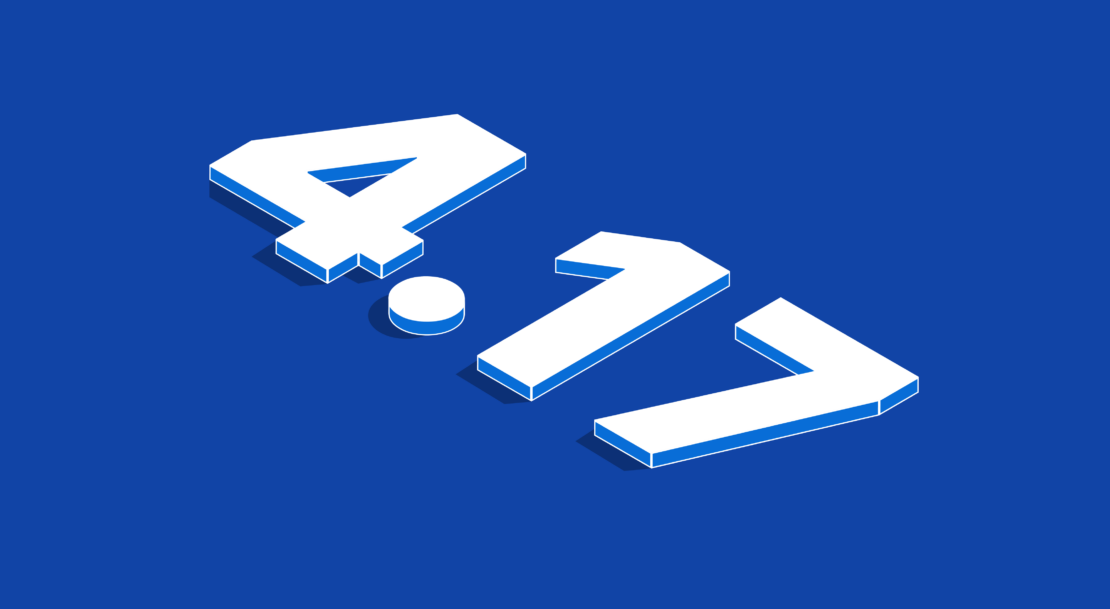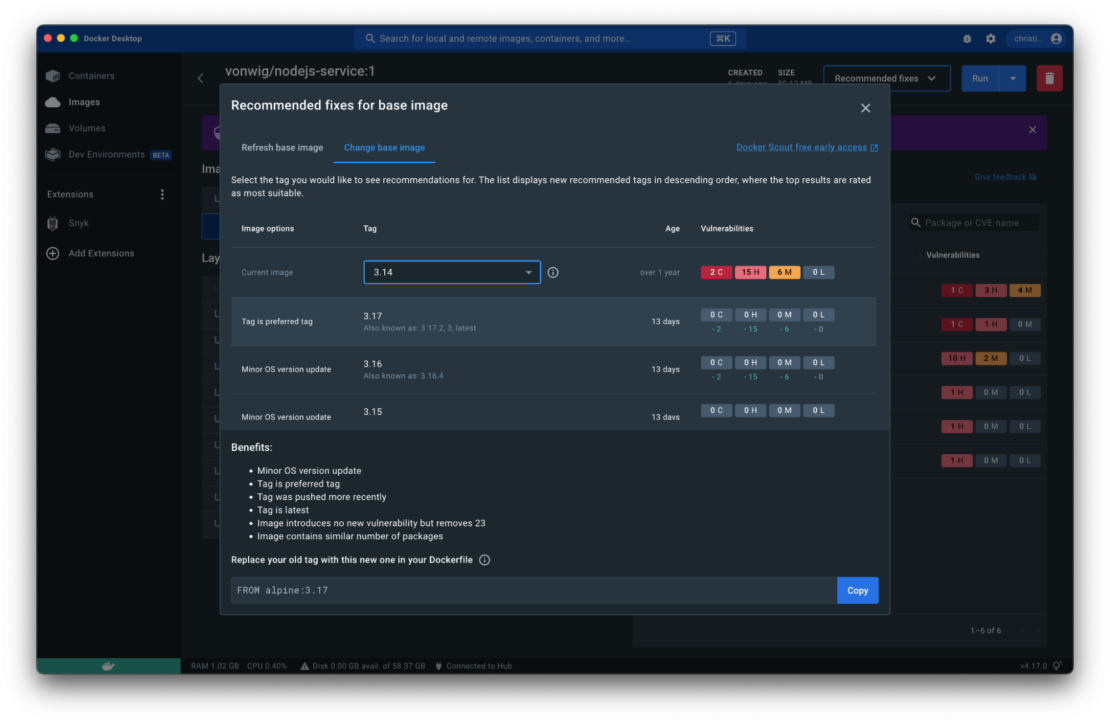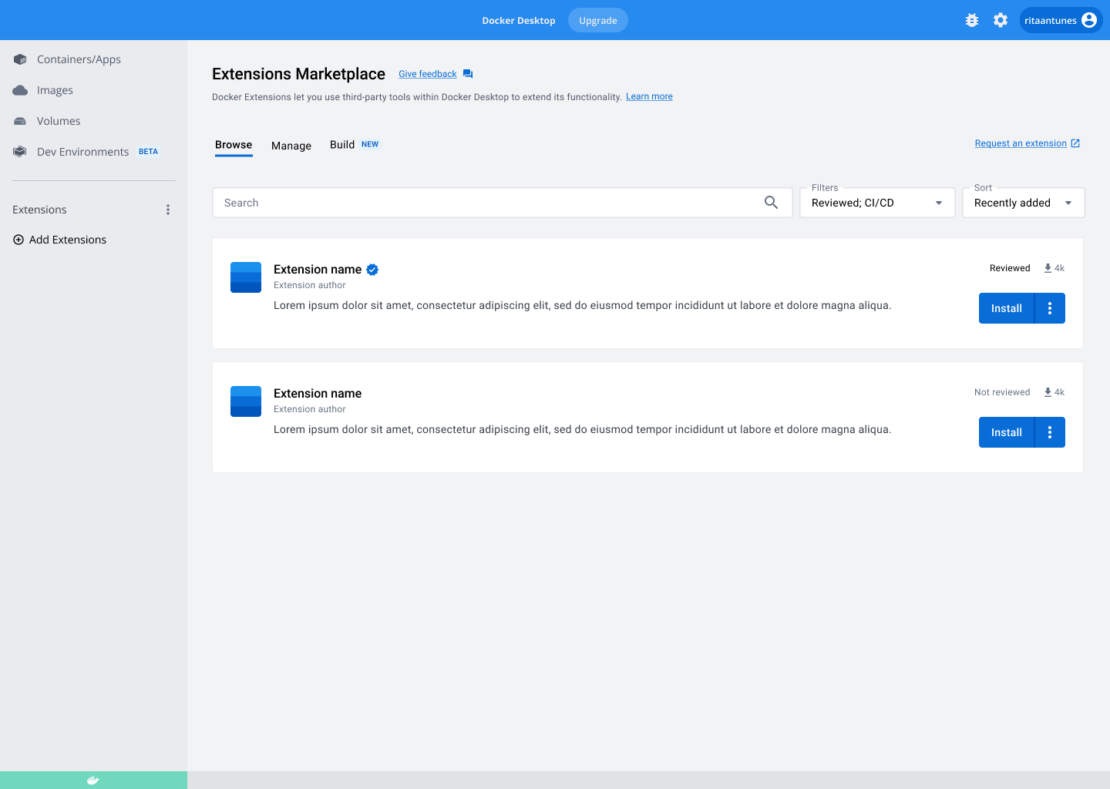We’re excited to announce the Docker 4.17 release, which introduces new functionality into Docker Desktop to improve your developer experience. With Docker 4.17, you’ll have easier access to vulnerability data and recommendations on how to act on that information. Also, we’re making it easier than ever to bring the tools you already love into Docker Desktop with self-published Docker Extensions.
Read on to check out the highlights from this release.

Improved local image analysis
Container image security presents challenges such as dependency awareness, vulnerability awareness, and practical remediation in day-to-day reality. Since Docker Desktop 4.14, we’ve consistently added features to help you understand your images and their vulnerabilities. Improvements in 4.17 were designed with developers in mind to address software supply chain security.
We’re pleased to announce Early Access to the new Docker Scout service. Docker Scout provides visibility into vulnerabilities and recommendations for quick remediation. Now you can use Docker Scout to analyze and remediate vulnerabilities on local images in Docker Desktop and the Docker CLI.
Check out the Docker Scout documentation to learn more about how to get started.
What can you do with Docker Scout?
- Image analysis results: Filter images based on vulnerability information, look for specific vulnerabilities, or confirm when vulnerabilities have been remediated. You’ll see results based on the layer in which a vulnerability is introduced, so you know exactly where the alert is coming from.
- Remediation advice: Get guidance on available remediation options. Docker Scout shows you the recommended remediation path depending on the layer of the vulnerability. Docker Scout also shows a preview before you resolve anything, so you know how many vulnerabilities will be resolved by a specific update.

- Remote registries: You can use Docker Desktop to view and pull images from Artifactory repositories to analyze them.
- Command-line interface: As of Docker Desktop 4.17, the
docker scancommand is deprecated and replaced with a command for Docker Scout –docker scout. Read the release notes for more detail.
Update to Docker Desktop 4.17 to access these new features and take them for a test run. You can also provide feedback directly in Docker Desktop by navigating to the images tab and selecting Give feedback. We look forward to hearing from you!
A new way to publish Docker Extensions
We are excited to introduce a new way to publish a Docker Extension. When submitting an extension to the Marketplace, you now have two publishing options:
- Docker Reviewed
- Self-Published – New!
Self-Published extensions are automatically validated. If all validation checks pass, it is published on the Extensions Marketplace and accessible to all users within a few hours. Self-Published is the fastest way to get developers the tools they need and to get feedback from them as you work to evolve and polish your extension.
Developers can identify self-published extensions in the Extensions Marketplace by the not reviewed label. Extensions that are manually reviewed by the Docker Extensions team have a reviewed label, as shown in the following screenshot.

We are excited about the increased reach and accessibility the new self-publishing workflow brings to both Docker Extension publishers and users.
If you have an idea for an extension that isn’t already in the Extensions Marketplace, you can submit it to our ideas discussion board.
Let us know what you think
Thanks for using Docker Desktop! Learn more about what’s in store with our public roadmap on GitHub, and let us know what other features you’d like to see.
Check out the release notes for a full breakdown of what’s new in Docker Desktop 4.17.
